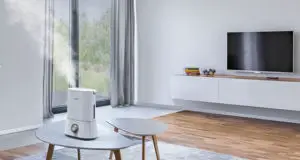Why is My Dehumidifier Blowing Hot Air? – A COMPLETE Guide
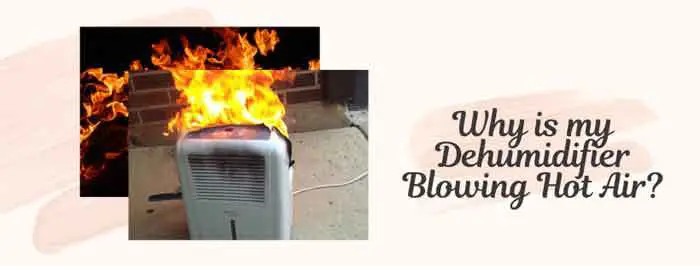
A dehumidifier works to keep our rooms at a comfortable humidity level.
The best case scenario is for us to set it once and leave it thereafter; or better yet, simply “plug and play”.
But if you’ve noticed that your unit is producing heat, you must be wondering if this is a cause for concern?!
Could there be a hidden setting or added function that can be discovered and tweaked to make the appliance work even better?
Or is the unit malfunctioning and requires replacing?
You may be thinking: "Why is my dehumidifier blowing hot air?" This article answers just that.
Let’s jump straight into it...
More...
Why does a dehumidifier produce heat?

First and foremost, dehumidifiers naturally produce heat.
This generated heat will constantly radiate out as the unit draws moisture out of the air to lower the humidity.
In fact, dehumidifiers that blow out cool air to lower the temperature are actually air conditioners!
Both work in the same way in that they draw in air from your room and then blow it back out again, except air conditioners release the hot air outside while circulating cool air back inside!
How does a dehumidifier work?
A dehumidifier draws in air and runs it across coils where the moisture condenses and drips into a bucket at the bottom of the unit.
This exhaust air is then heated before being sent back into the room.
There’s a very good reason for heating the exhaust air – it gives that extra nudge towards dealing with moisture.
When hot air exits the unit and touches condensed moisture, similar to water droplets on the window pane, it turns them into steam. This helps the dehumidifier do its job much faster.
The heated exhaust air turning condensed moisture into steam is a clever engineering trick that uses the heat a dehumidifier naturally creates when working to prevent moisture from condensing inside the unit and ruining the circuitry.
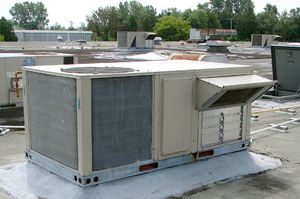
Air conditioners usually release any heat generated through vents, which you can usually find placed outside of the house.
Hence, unless you find a way to vent it outside, your dehumidifier will also constantly produce heat and radiate it out.
There’s no way to tinker with a dehumidifier to make it produce less heat, not without turning it into an air conditioner, at which point you might as well buy and use one.
Arguably, one could use an evaporative cooler to offset the generated heat and cool the air.
The problem is that such a cooler would increase relative humidity.
A dehumidifier and evaporative cooler working in the same room would result in a stalemate, as they would fight each other and simply waste power.
What if my dehumidifier is producing TOO much heat?

Removing moisture from the air can make your surroundings feel slightly warmer than it was because we perceive ambient temperature subjectively.
There’s a neat saying "it's not the heat, it's the humidity"; in this case, it’s completely correct.
The change in humidity can make you feel a change in temperature, even when there was none.
But, if the exhaust air is indeed hot, it might mean the dehumidifier has done its job and there’s no more excess moisture in the air.
When is this a cause for concern then?
How much moisture should my dehumidifier pull out?

Your dehumidifier should be set to do its job based off the relative humidity you want to reach inside your home.
Thankfully, there is usually no need to worry about dehumidifier heat. It’s actually this heat that helps the unit work properly.
On the flip side, if the dehumidifier can’t heat up properly, it can burn out.
For example, if the heating coil gets clogged with dust, it can be prevented from heating, which can burn up the compressor inside the unit.
A rule of thumb is that a dehumidifier should draw out 24 pints (11 liters) of moisture out of a space up to 1700 sq. ft. (157 square meters), and 40 pints (19 liters) for spaces larger than that.
Troubleshooting a broken dehumidifier & what you can do if your dehumidifier is blowing too much hot air?
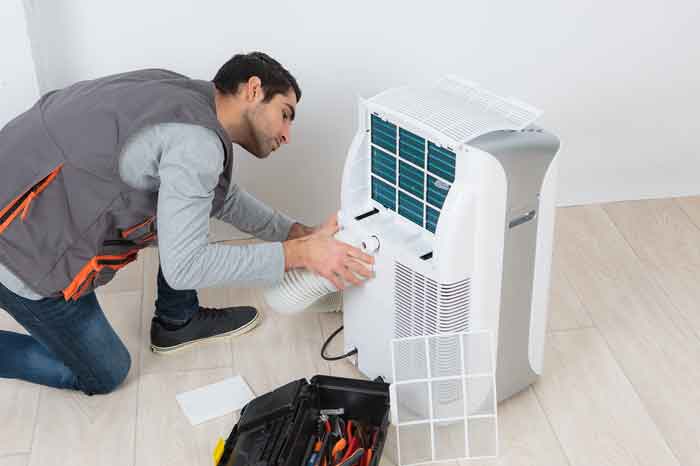
If a dehumidifier is broken, it will give out telltale signs of what’s wrong. Here are some of the most common ones.
Keep in mind that some of these signs point to the dehumidifier being broken beyond repair:
#1 The unit randomly shuts off
When a dehumidifier is running, you will usually hear a steady hum of the compressor. Some dehumidifiers are also quieter than others.
However, in cases where the hum randomly stops, it most likely means you are having a problem with the humidity sensor or the circuit board.
This is usually due to excessive moisture due to condensation inside the unit.
To verify this, check if the display is behaving normally. If the display is flickering, the most likely cause is the circuit board.
However, if the display is showing the correct humidity, then the humidity sensor is not damaged.
#2 Occasional buzzing or clicking sound
If you notice intermittent buzzing or clicking for a couple of seconds every few minutes, you will most likely have a faulty compressor or dedicated compressor components failing.
Dehumidifiers usually have a thermostat on top of the compressor which turns off the unit when it turns too hot; if this sensor goes haywire, this may cause the unit continue running and build up heat.
Besides the thermostat, any other electronic components in the unit, such as capacitors, can get busted out of nowhere.
Unless you have specialized tools, like an ohmmeter, you’re unlikely to be able to find out the cause yourself.
However, if you do have an ohmmeter, carefully test one component at a time until you suss out the cause, such as in this video.
#3 The unit won’t run at all
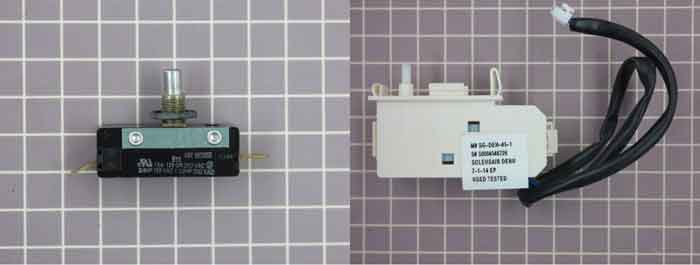
Almost all dehumidifier units have a few switches that prevent the unit’s operation if something is missing. The float switch and the bucket switch are two examples.
These switches are safety features and are designed to be very sensitive.
Even if the bucket switch inside the unit is just slightly off, the bucket switch won’t trip, which stops the unit from running.
These switches also break easily but are fairly cheap and easy to replace.
#4 The cooling coils aren’t getting cold
If the unit is running but the cooling coils aren’t getting cold, it’s likely you have a leak in the refrigeration system. What you can do is to touch the cooling coils, which are most commonly found right behind the filter.
If they’re not cold, it means that the refrigerant has escaped the unit. If so, it may then be time to get a new dehumidifier!
Conclusion: Why is My Dehumidifier Blowing Hot Air?

A dehumidifier blowing hot air is not a sign of malfunction. Dehumidifiers work by drawing in air and removing the moisture in it before releasing it back out.
Heat is naturally produced and constantly radiates out as the unit draws works to lower the humidity in your surroundings.
However, if the unit is blowing out too much hot air, it may be down to several factors such as issues with electrical components, leaks in the refrigeration system, or simply an indication that your unit is nearing the end of its lifespan.
Pay attention to how your dehumidifier works before intervening – touch it, listen to it and move it a bit. If there’s moisture captured, in all likelihood it isn’t broken.
On the other hand, if you find that your dehumidifier isn’t broken but you are uncomfortable with the amount of heat produced, consider getting an air conditioner instead.
It will work just the same!

